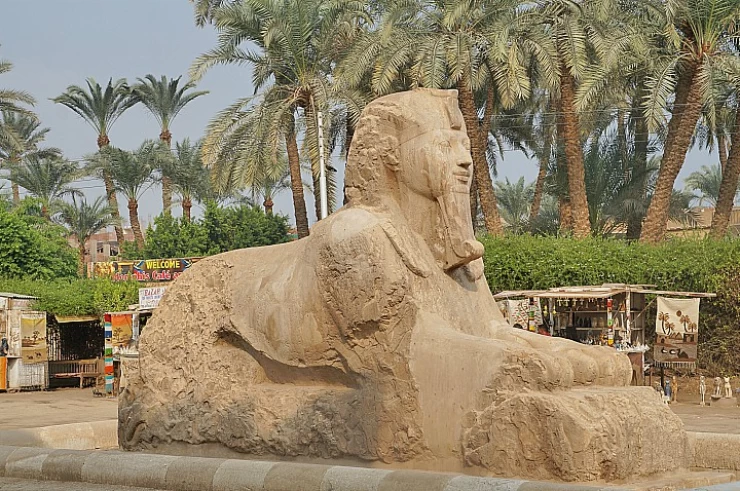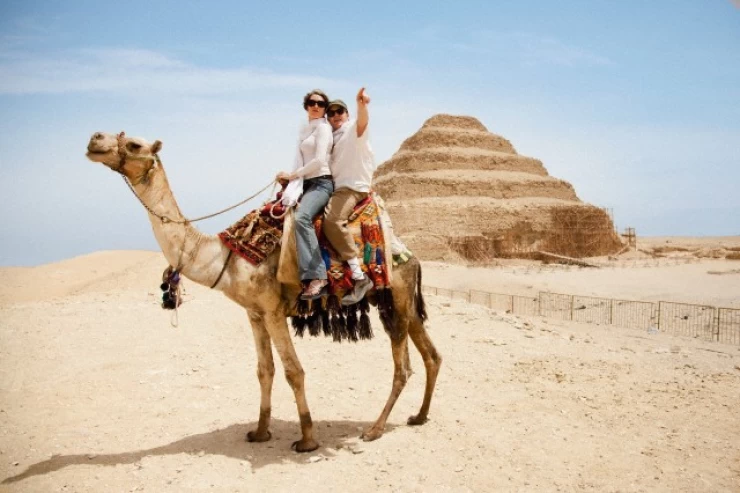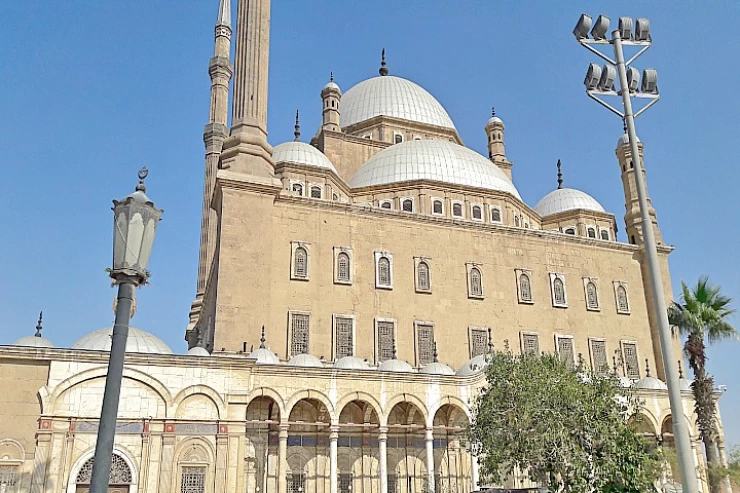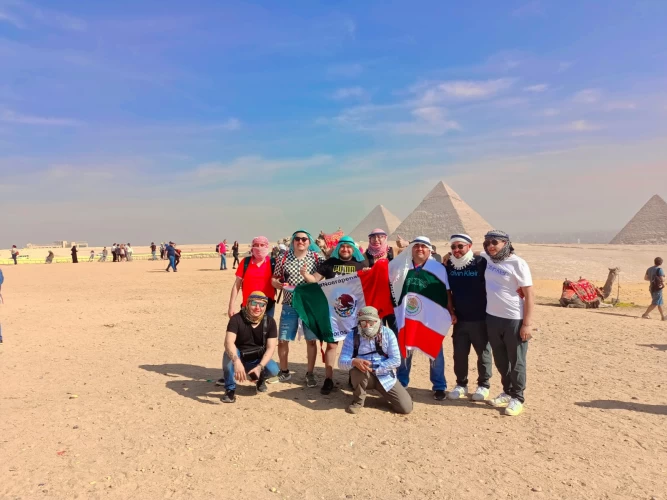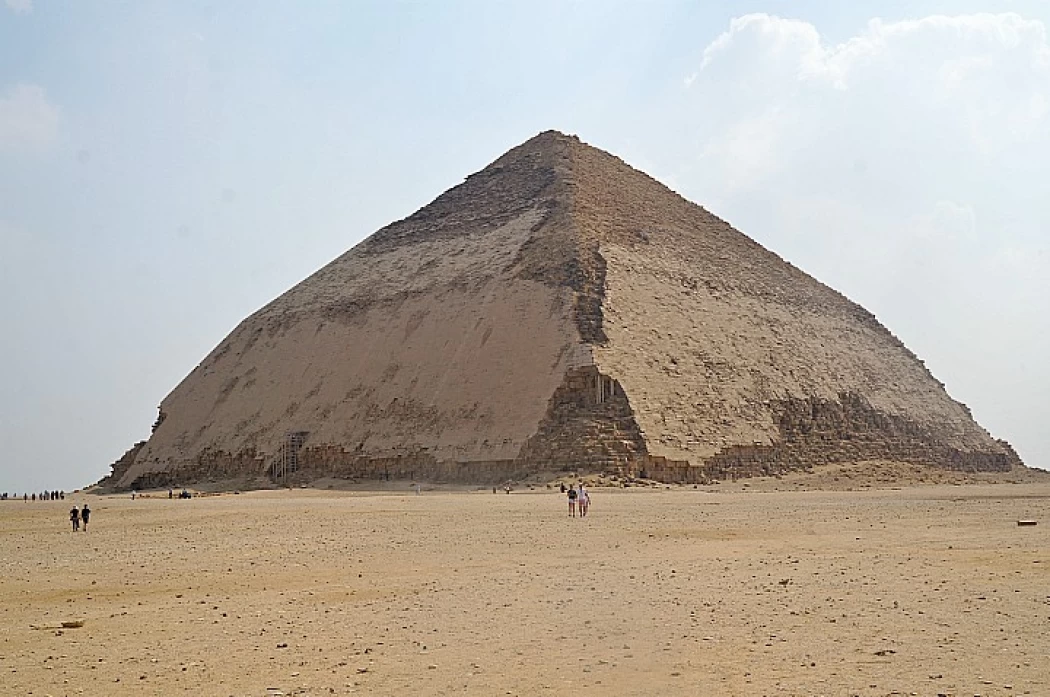
Facts about Dahshur Archaeological Site | Pyramid of Amenemhet III
Amenemhat III (CA. 1860s.M.- 1814 BC). He was the sixth pharaoh of the XII dynasty. As the earliest known date of his reign is what was found in a papyrus dated to the year 46, the first month of the flood (akht), the 22nd day of his reign. And the period of his reign is considered the Golden Age of the Middle Kingdom. Perhaps for a long time, he shared the reign with his father Sisistris III (20 years).
He established a joint reign with his successor AMN-m-hat IV, near the end of his reign, as is now preserved in a shattered rock inscription in the Konso region of Nubia. On this inscription, we find the equality of the first year of the reign of Aman-m-hat IV with either the year 46, 47, or 48 of the reign of Aman-m-hat III. His daughter, Sobek-neferu, succeeded King AMN-m-hat IV of Egypt as the last ruler of the Twelfth Dynasty. It is worth noting that the meaning of the coronation title of Aman-Ma-hat III "ni-Maat-Ra" belongs to the Justice of RA.
He built the first pyramid in Dahshur (called the black pyramid), whose construction was accompanied by structural problems that caused the project to be abandoned before its completion. And he decided to build a new pyramid in Al-Hawara around the fifteenth year of his reign as King. The Dahshur pyramid was used for the burial of many ladies of the royal family.
His funerary temple in Huwara (near Fayum), which is accompanied by a pyramid, was known to both Herodotus and the Sicilian Diodorus as the palace of the wanderer or the labyrinth. The King's pyramid in Hawara included some of the most complex security precautions found in Egypt, and perhaps the only one that comes close to the tricks that Hollywood associates with such facilities. Nevertheless, the Tomb of Amenemhat III was stolen in ancient times.
The historian Strabo praised him and considered him one of the wonders of the world. The pyramid of the King located in Huwara contains a number of the most complex security features that are not found in any of the other pyramids. The Tomb Pyramid of Aman-m-hat III was found fallen from the top of its building relatively intact; it is now in the Egyptian Museum in Cairo.
Military campaigns and projects
There is very little evidence about the military campaigns that took place during the reign of the King. There is one blog about a small expedition that took place in the ninth year of the King's reign. Evidence of this was found in a rock inscription in Nubia near the fortress of Qamna. This short text indicates that this military expedition was led by the orders of Nakhon-sa-Mento, who is said to have gone north with a small force, none of which died when he returned to the South.
It has been recorded that many expeditions were sent to the mining areas under this king. One of them dates back to the 11th year of the King's reign. Two other campaigns date back to the years 20 and the year 28. Other expeditions have been sent to the Hammamet Valley. These campaigns date back to the 2nd, 3rd, 19th, 20th, and 33rd years of the King's reign. A plaque has been discovered in Marsa Alam on the coast of the Red Sea, indicating one of the expeditions to Puntland under the command of King AMN-m-hat III. The high director of STP-F was its highest joint official. Other figures in charge of this campaign included AMN-hateb and treasurer NEB-Su.
Grand Canal (Mr-or) Throughout his long reign, AMN-em-hat III continued the tasks that his father may have started to connect the Fayoum depression with the Nile River. A canal was dug with a length of 16 kilometers and a width of 1.5 kilometers, which was known at that time as "Mer-ur" (the big canal), but now it is known as Bahr Yusuf. The slopes of the banks of the central side were 1:10 deep to allow the use of rock fillings and loose soil. The canal was sloping in a low-Fayoum direction with a slope of 0.01 degrees, and had a dam called "ha-ur" running from East to West. This huge engineering task was eventually completed by his son Aman-m-hat IV and brought prosperity to the Fayoum region with it. Fayoum became the breadbasket of the country, and continued to benefit from it until 230 BC, when the Lahun branch of the Nile River was blocked as a result of being filled with silt.
Vizier Kheti assumed this position around the 29th year of the reign of King AMN-m-hat III. It is believed that the Rhind mathematical papyrus was originally composed during the reign of Amn-m-hat III. The archaeological monuments are numerous and in excellent condition. This includes a small but well-decorated temple in the ancient city of Palaeum, which he and his mother dedicated to the harvest goddess Raninotet.
Sculpture
Aman-m-hat III, as well as S-N-and Sirte III, are considered the best kings of the Middle Kingdom to whom several statues have been documented, since about 80 statues or remains of statues can be attributed to them. The style of carving of Amn-m-hat III continued the tradition followed by S-N-and Sirte III in that matter. Many of his works no longer represent him in the form of an ideal young king, but show signs of aging using physiognomic expressions. Surprisingly, there is a large collection of various stones used in the sculptures of this King, the use of which has not been recorded for any king before him. In addition, this King introduced many new types of sculptures, a large number of which were inspired by ancient models dating back to the early dynastic era. Two styles of facial sculptures can be attributed to Amn-m-hat III.
Realistic style: which shows the skeleton of the King's face, wrinkles are clearly distinguished. The features of the destination were inspired by the sculptures of S-N-Wassert III. The ideal style is one that shows the king as a young man with a triangular face.
Dahshur
Dahshur village is one of the villages belonging to the Badrshin Center in the Giza governorate of the Arab Republic of Egypt. At the 2006 census, Dahshur had a total population of 14,736, of whom 7,481 were men and 7,255 were women. Dahshur is one of the tourist areas where visitors come from all over the world because of its many ancient Egyptian monuments.
Dahshur Archeological Site, known to most, is situated on the Western bank of the Nile River, about 40 kilometers to the south of Greater Cairo, where it appears to draw less of the public’s attention compared to many of Egypt’s ancient sites. This exceptional site, which is less packed than the Giza Plateau, allows for a more personal understanding of the evolution of ancient Egyptian architecture. With some of the oldest and most distinct pyramids in the nation, Dahshur is proof of architectural innovation that used to exist before the making of the Great Pyramid.
The relative tranquility that Dahshur offers enables visitors to view these impressive edifices in a much more comfortable manner without falling into the unpleasant crush of other more popular attractions. Let us explain why this fascinating place should be included in your Egyptian tour program.
A Brief History of Dahshur
The relevance of Dahshur back to the Early Dynastic period, that is, the 4th Dynasty (circa 2613–2589 B.C.E.), during the reign period of Pharaoh Sneferu, who was the first ruler of the Old Kingdom of Egypt and Khufu’s father, the great pyramid builder at Giza. Known for his innovation in building structures, the Egyptian Pharaoh can be said to have used dahshur as his laboratory for the construction of pyramids.
This region has several pyramids, such as the bent pyramid and the red pyramid, both built for Sneferu the King of Egypt in the 4th Dynasty. Their shapes are quite interesting and differ from each other, resembling the stages of pyramid-building that developed to produce the famous pointed pyramids standing on the Giza plateau.
Near the Bent Pyramid is located the Red Pyramid, which is also a creation of Sneferu’s and is generally accepted as the earliest real smooth-sided pyramid ever built. This pyramid is named after the tinge of red that its limestone blocks have and is the third largest pyramid in Egypt with a height of 105 meters. Certainly impressive.
The Bent Pyramid may be said to be the best-known structure in Dahshur, and there is a good reason for this. The peculiarities of this pyramid lie in its shape that curves like a bend, with a miniature upward angle curve occurring at the halfway mark. It was first designed as a real pyramid with sharp surfaces at its sides, but the angle was changed halfway through the construction, most probably for the fact that there was a problem with the structure.
The Bent Pyramid rises in height to 104 meters and is sheathed in white limestone, which is largely well-preserved, giving a clear picture of what pyramids would have looked like when they were constructed. In the last few years, the Bent Pyramid has been the subject of much activity, and visitors have been allowed to view its inner chambers and labyrinth of passageways. Within, there are two tombs connected by a small hall lined with walls of limestone that still show the marks made by the chisels of the workers at the time.
a feat of engineering and a testament to the mastery of ancient Egyptian builders.
The Red Pyramid is notable for its nearly perfect smooth sides and the precision of its construction. Visitors are permitted to enter the pyramid and explore its interior, which includes a long descending passageway leading to three burial chambers. The pyramid’s acoustics and the faint scent of ancient stones lend a mystical atmosphere to the experience, offering an almost ethereal glimpse into Egypt’s distant past.
In addition to the pyramids erected by Sneferu, Dahshur further contains the Black Pyramid of Amenemhat III, which dates back to the Middle Kingdom period. Even though age has not spared this particular building, with its appearance now likened more to a dark, ruined lump than a pyramid, it still stands as an interesting relic of the architectural creativity that characterizes the area. In the first instance, the Black Pyramid was made with limestone and was buried in dark mud bricks, hence the background. It is believed the pyramid was built as a tomb for Pharaoh Amenemhat III, but it was not used for this purpose because it became unstable.
The Dahshur Necropolis: A Rich Tapestry of History
Dahshur's archaeological wealth is not limited to its pyramids. It is a very rich site that features a large cemetery filled with tombs, burial shafts, and other ancient structures that assist in understanding the ancient Egyptians’ views towards death. Many objects have been found on this site by archaeologists too, such as pots, ornaments, and instruments, some of which are kept in the Egyptian Museum in Cairo.
Dahshur in recent years was the subject of a number of archaeological campaigns that aimed at learning more about the area. The excavations opened more tombs and found more articles, which illustrated the way of life of the individuals who were born and buried within these grand constructions.
Accessibility and Location Dahshur is reachable by vehicle for a brisk one-day tour from Cairo. Most of the travelers traveling to Dahshur also make a visit to the neighboring areas of Saqqara and Memphis to make it a day full of ancient Egyptian history. The site is easily reached by car, and there are also organized tours that include transportation and a knowledgeable guide.
Tickets and entry fees are charged to these ancient wonders.
The introduction fee to enter the Dahsur site is quite minimal compared to that of the already congested pyramids at Giza. Entry is allowed not only to the Bent Pyramid but also to the Red Pyramid, enabling them to see the outside and the inside of these two ancient structures.
Best Time to Visit I think the most appropriate time for a tourist to visit Dahshur is in the cooler months of Egypt, which are from October to April. This is the season when there is moderate scenery that makes the exploration of the outdoor site and the climbing of the pyramids inside very interesting. Early visits are best to prevent exposure to excessive heat around noon and to have the site in low attendance.
What to Bring Light clothing and good walking shoes are advised as touring Dahshur involves a bit of walking and the inside of the pyramids is sometimes sloping steeply. Carry water and sun cream and preferably a torch if you are going to the chambers inside the pyramids because they are not always well-lit.
Guided Tours A visitor to Dahshur can, however, decide to visit the area without a guide, but it is highly recommended that an experienced guide be hired. A visitor may not only learn the history and importance of the pyramids and the site from the guide but also learn how to move within the pyramids themselves.







